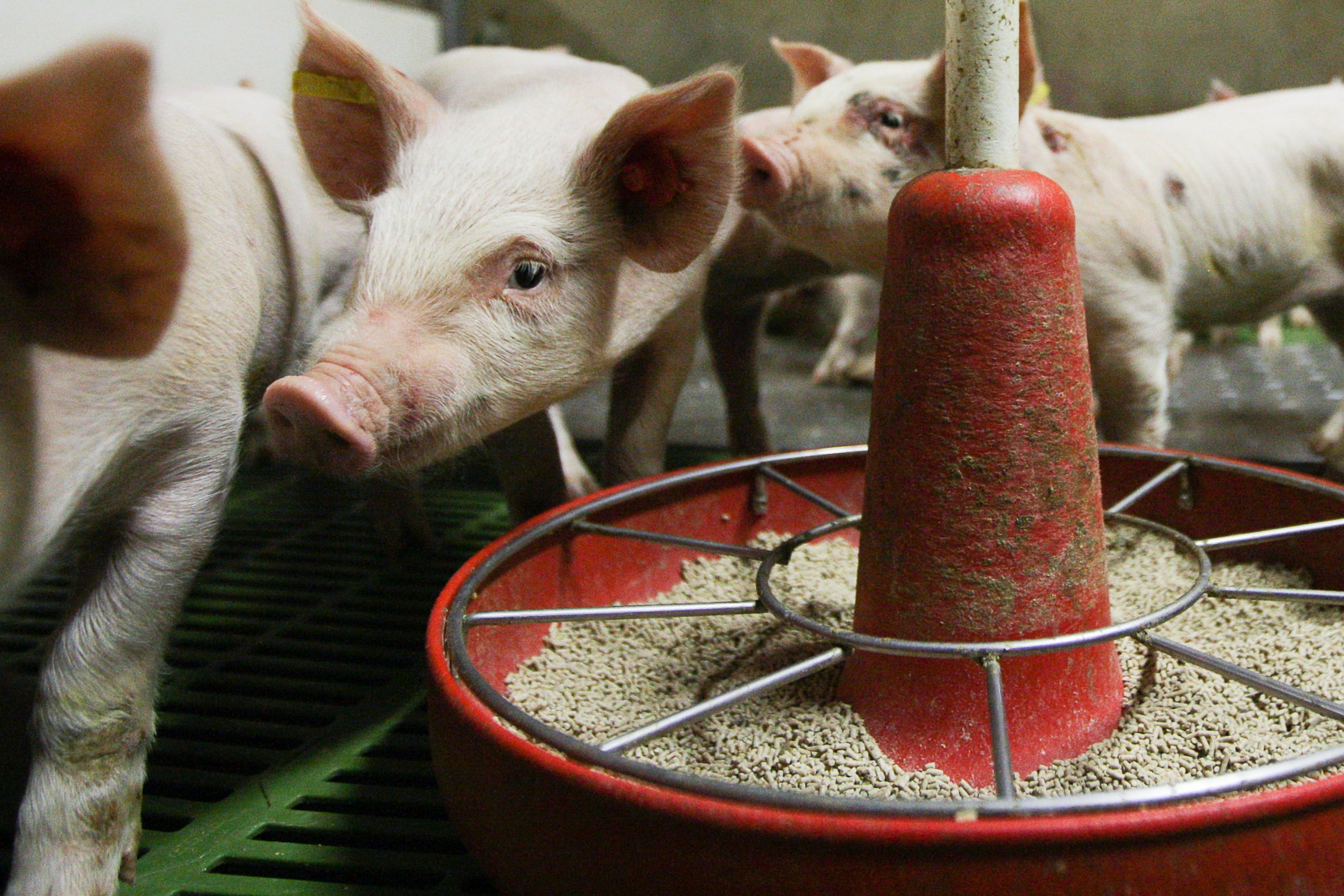Feed intake: A complex interaction

Getting the right amount of feed and nutrients to young animals will facilitate that they perform better later on in life. Feed intake is a key component in this. But animals also want a diet that has a good taste!
Whether it is a human baby or a small piglet, it comforts us to see that it eats well and has a good appetite for different things. Taste plays a significant role if the young animal actually consumes the desired amount of feed. It is not only a matter of ‘the animal is hungry, so it will eat anything’.
Interestingly, pigs have a relatively large tongue with one of the highest number of taste buds (19,904). Humans have 8,000-10,000 taste buds on the tongue. Birds have far fewer taste buds than mammals, chickens only have around 30. Most animals (and humans) don’t like bitter taste. This is because this is related to toxic or anti-nutritional compounds. In nature, seeds, fruits and nuts (often part of the reproductive system) are therefore often bitter, as a result of the defence mechanisms of the plant.
Complex interaction
In a recent review by Eugeni Roura from the University of Queensland in Australia, a nice timeline is presented on studies done in this field. Most of the early studies in the field of taste and feed intake in young pigs focused on sucrose and/or human high intensity sweeteners, particularly saccharin. Pigs’ preference for sweeteners has been a popular in research until recent times, but today we have access to more laboratory techniques, tools and knowledge on the gut system and genetic make-up of the pigs. These insights lead to more studies in the complex interaction of taste, flavour and feed intake in pigs. This goes beyond adding a sweetener to the creep feed. In addition, taste receptor cells seem to be present in different regions of the body. In the mouth, but also in the stomach and intestines. Also gut peptides play an important role.
In Roura’s review, also the effect of certain ingredients (such as amino acids and starch) is explained. Different ingredients can trigger certain receptor cells in the animal, hence having an effect on hormone or glucose release for example. This in turn can lead to increased or decreased feed intake levels.
Umami taste
Also the savoury (umami) taste is something piglets like. I wonder if this is also the same for human babies and young children. They often say that all youngsters should become familiar with all different tastes (sweet, sour, salty, bitter or umami) as early as possible, and that you should this taste at least 8 times before children get used to it. I certainly believe this will benefit health and feed/food intake later in life (both piglets and humans). A wholesome diet, with different flavours and tastes is something we all like, right? And with the evolution of techniques to study nutrient sensing and its relationship with feed intake (such as neuroscience), science can be turned into practice. For example, farmers can choose to enhance feed intake in critical phases (i.e. post-weaning piglets, early lactation in sows) or appetite can be decreased in fattening pigs (thus decreasing fat deposition). But more studies need to be carried out to unlock the full potential of the science behind nutrient sensing.











